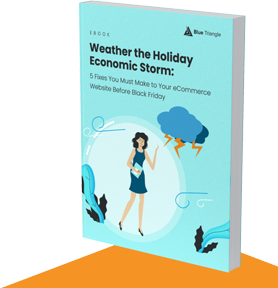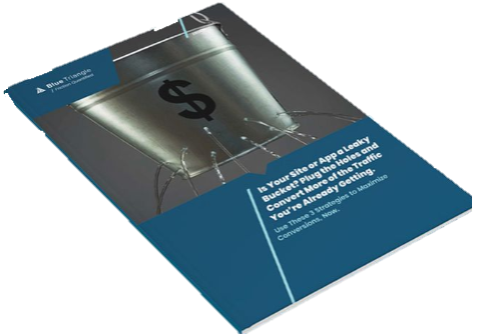"Frictionless" has become a digital holy grail—especially in financial services. It promises seamless experiences, streamlined transactions, and happy customers.
But as Bobbi Jo Allan, Vice President of Digital Product Management and Innovation at Nationwide Financial, recently shared with us on The Frictionless Experience, reducing friction isn't about shaving a few seconds off a login screen or removing a click from a form.
Because in this industry? The biggest friction point isn't technology.
It's a form.
Specifically, forms that come back NIGO—"Not In Good Order."
It's a problem so common, so costly, and so baked into the way financial products are sold that solving it can feel like boiling the ocean. But Bobbi Jo and her team are doing just that—with a bold vision for a "formless future" that doesn't just reduce friction. It redefines it.
The Real Friction Is the Form You Don't See
We've all been there—digitally filling out paperwork for a mortgage, a loan, a new financial account—and thinking, "Why does this feel like it was designed in 1998?" That sensation is friction. But in the B2B2B2C world of financial services—where Nationwide operates—the true user isn't always you.
"It's an intermediated business," Bobbi Jo explained. "People tend not to come directly to Nationwide to purchase a financial product. These are complicated products. So very often, people work with a financial advisor to get a recommendation".
That's where the friction begins: with the advisor.
If a single field is incomplete, a signature is missing, or the wrong version of a form is submitted, the entire transaction is halted. That's NIGO. And it's not a rare edge case—it's endemic.
"NIGO is a symptom. It tells you that something upstream didn't happen the way it needs to," Bobbi Jo said. "And it causes frustration up and down the chain."

This isn't about a typo on a website. These are complex, often months-long sales processes involving financial advisors, firms, underwriters, and end customers. A single misstep can derail a transaction worth hundreds of thousands of dollars. The friction isn't just annoying—it's operational, reputational, and revenue-impacting.
The Formless Future
So what's the fix? Digitization? Not quite.
Enter the idea of a "formless future"—a radical transformation of how financial products are transacted, where the concept of "a form" doesn't exist at all. No documents to fill out. No fields to forget. No signatures to chase down. Just seamless, guided workflows that do the hard thinking for the user.
"If you can't fill the form out incorrectly… it's going to radically reduce the amount of NIGO we have," she said.
This isn't just a theoretical future. It's already reshaping Nationwide's approach. The goal is to design systems where the advisor can't make a mistake because the experience is intuitive, dynamic, and integrated.
It's like Amazon for retirement planning—not because you can one-click buy an annuity, but because the experience respects your time, prevents errors, and gives you confidence in your decision.
"We've moved from talking about digitization to transformation," Bobbi Jo added. "What if the process wasn't measured in steps at all?"
Ease of Use = Revenue
One of the most eye-opening parts of our conversation was this: friction isn't just a user experience issue. It's a competitive advantage.
When advisors choose between similar products from multiple carriers, ease of doing business becomes the deciding factor.
In other words, frictionless equals formless, which equals trust—and, ultimately, revenue.
So, it's not about slapping a slick interface on a broken process. It's about becoming the advisor's most trusted, easiest-to-use partner. Because when the advisor wins, everyone wins.
Why Some Friction is Necessary
But here's where the story gets more nuanced—and fascinating. Not all friction is bad. In fact, some friction is necessary.
Especially when it comes to financial decisions made in emotionally charged moments—like market downturns or sudden withdrawals.
"If someone calls us and says, 'I want to take all my money out,' we want to make sure the financial professional understands that's happening," Bobbi Jo said. "We wouldn't want that to be too seamless because it could lead to worse outcomes."
That's friction used strategically—not to slow down the user but to protect them from making a rash decision they might later regret.
And then there's fraud.
"We absolutely have bad actors who would love nothing more than to get access to people's financial products," she said. "So there are layers and protections in place—especially when someone's trying to make a withdrawal or add someone who can make decisions on their behalf."
This is friction as a shield. It adds time, yes. But it also adds security and sometimes even dignity—especially in elder abuse scenarios or identity theft.
It's Not Just Tech. It's Human.
And this brings us to the most important insight from our conversation: the best digital experiences aren't just about removing humans from the equation. They're about empowering them.
That hybrid model—digital for the routine, human for the emotional—is the future of financial services.
It's also what enables trust to scale.
Because these aren't one-and-done purchases. A life insurance policy might stay with someone for decades. And no one remembers the exact reason they bought it 20 years ago. They just want to be sure they're doing the right thing today.
That's where a smart, thoughtful friction model matters. Not less friction. But the right friction.
"Money is emotional," Bobbi Jo said. "It's the ability to provide for your family. It's not just numbers. Very few people can dispassionately choose the most efficient investment. There's a lot more going on".
Designing for the Real Journey
We often think about customer journeys as linear: discover, purchase, onboard, retain. But in financial services, that journey is multi-layered and nonlinear. There are firms. Advisors. Integrations. Regulatory checks. APIs. And they all have to work together.
"It's not just about working with Nationwide," Bobbi Jo explained. "There are entire systems integrations that have to happen to even get on the shelf at a firm."
So, her team isn't just building slick interfaces. They're reimagining how value flows through this entire web—from data exchanges with firms to API platforms that accelerate access to new products.
It's innovation with empathy. Transformation that understands how people really buy, manage, and relate to financial products over a lifetime.
Final Thoughts: What Frictionless Really Means
At the end of our conversation, I asked Bobbi Jo what she wished more people understood about building frictionless experiences in financial services.
Her answer said it all:
In a world full of forms, regulations, and risks, that's a beautiful and bold vision—a frictionless future where trust is built not by removing all effort but by removing the right effort.
Because when frictionless equals formless, it doesn't mean impersonal.
It means intentional.
And in financial services, intention is everything.

During the holiday rush, every shopper matters
Optimize the customer journey before the eCommerce event of the year.

.jpg)




.png?width=940&height=788&name=Nationwide3%20(1).png)
